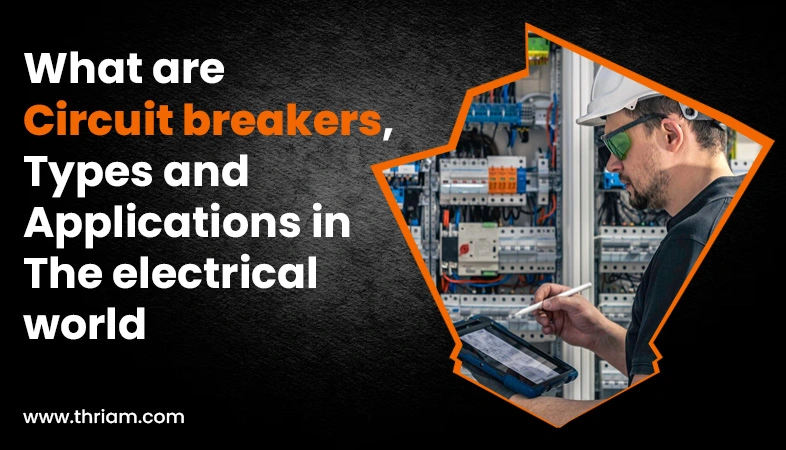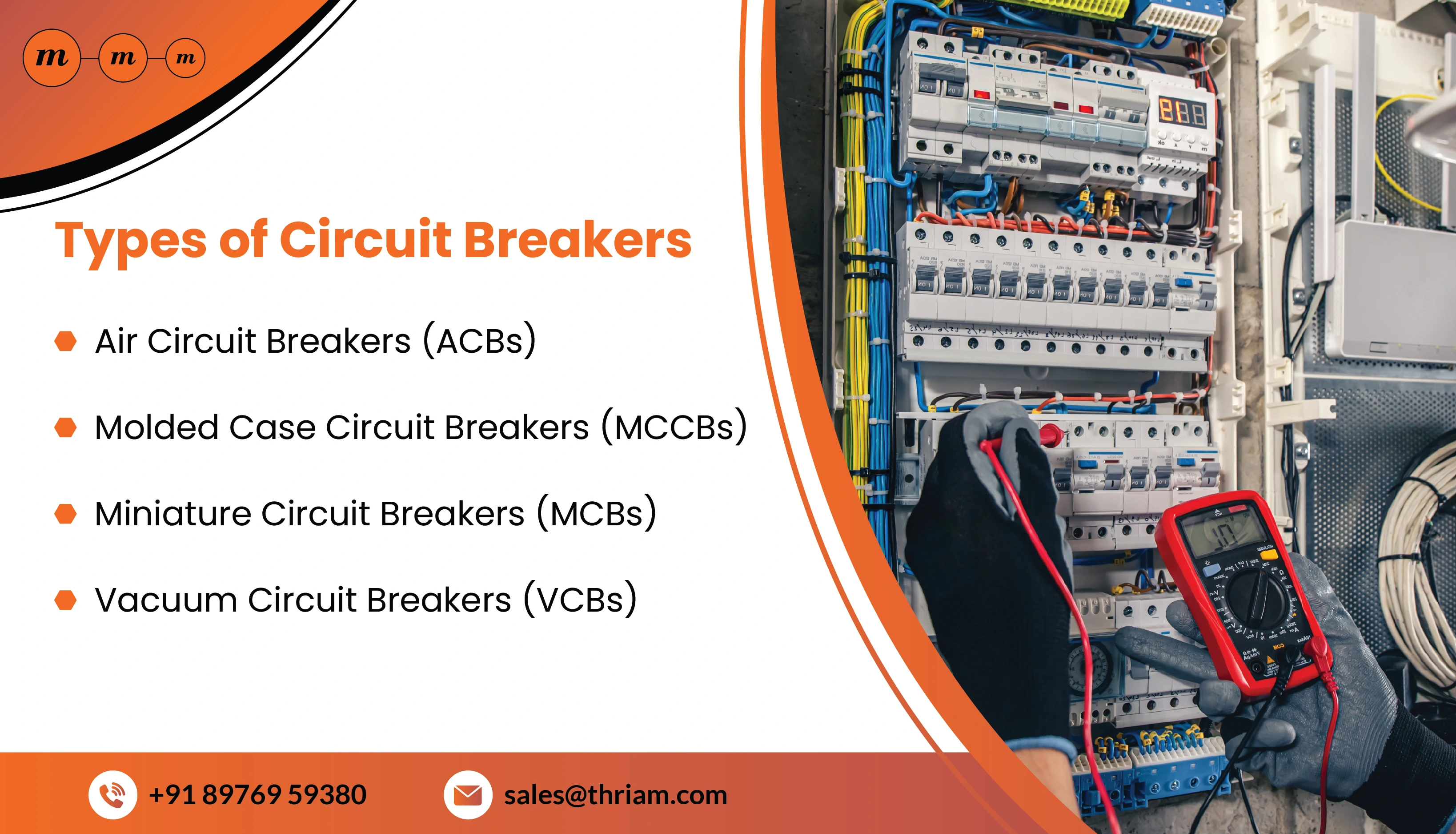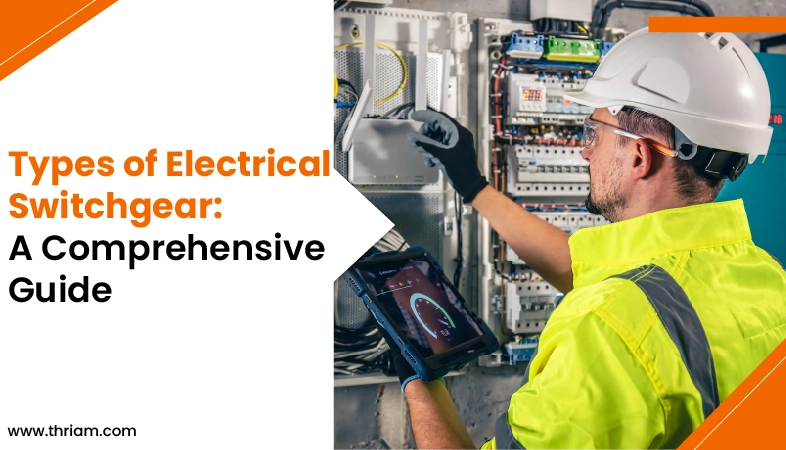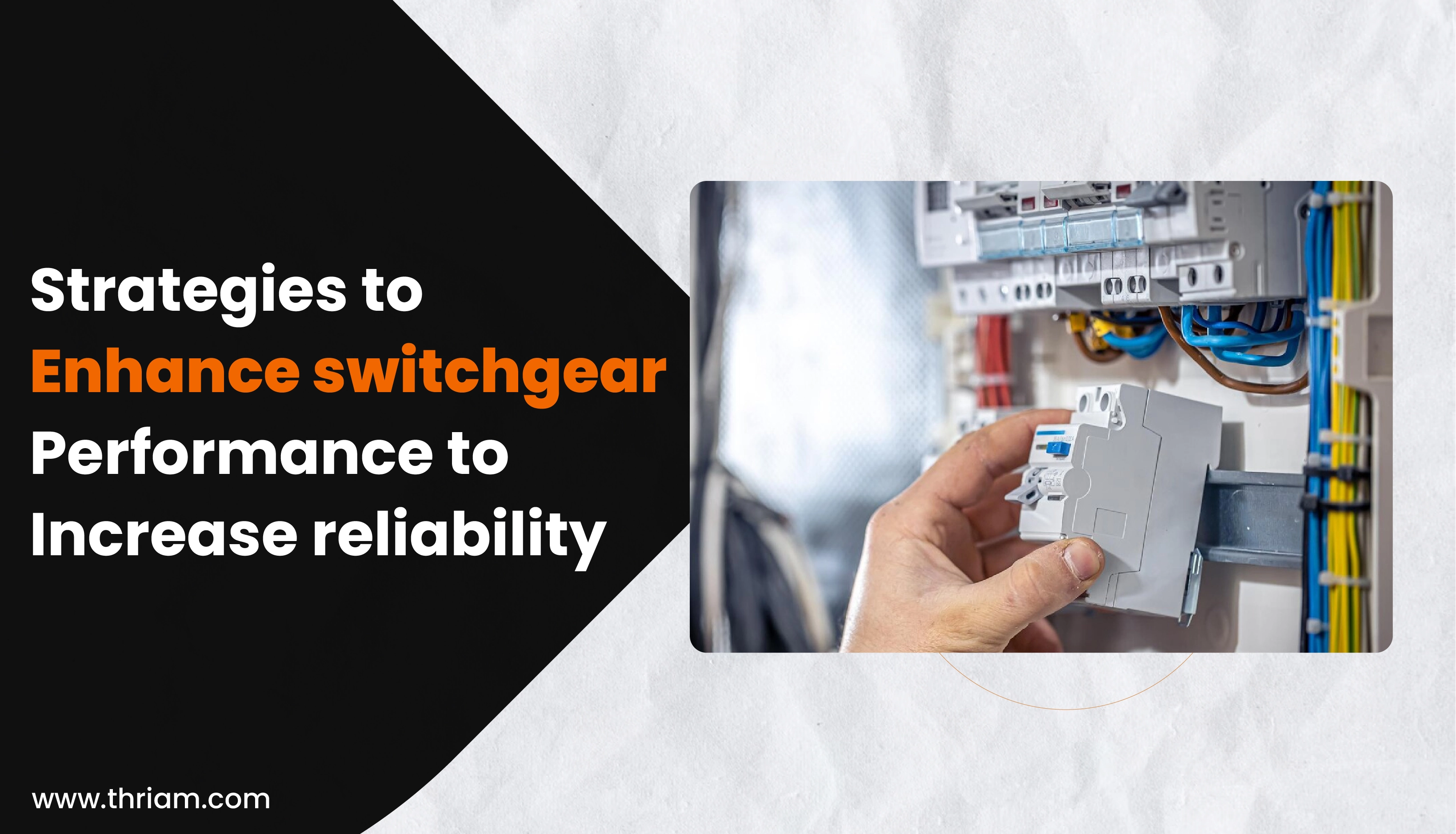Understanding Circuit Breakers: Types and Applications in Switchgear

Circuit breakers are essential components in any electrical system. They protect the electrical circuit from overcurrent and short circuits, which could damage the system and cause fires or explosions. Switchgear systems are the locations in electrical systems where circuit breakers are installed to protect the system. In this blog, we will discuss what circuit breakers are, their types, and their applications in switchgear systems.
Overview of Circuit Breakers
Circuit breakers are electrical switches that automatically interrupt electrical circuits when they detect an overload or a short circuit. The main purpose of circuit breakers is to protect the system from damage and to prevent accidents. The basic components of a circuit breaker are the contacts, the trip unit, and the operating mechanism.
When current flows through the contacts of the circuit breaker, they heat up. If the current exceeds the rated capacity of the contacts, they open, interrupting the current flow. The trip unit detects the overcurrent, and the operating mechanism opens the contacts. Circuit breakers are designed to break the circuit automatically, reducing the risk of electrical fires or explosions.
Types of Circuit Breakers

Circuit breakers play a crucial role in electrical systems, protecting them from overloads and short circuits. These essential devices come in different types, each designed for specific applications and voltage levels. In this article, we will dive into the various types of circuit breakers, exploring their characteristics and applications.
Air Circuit Breakers (ACBs):
Air circuit breakers are commonly used in low voltage systems. They consist of two types of contacts: main contacts and arcing contacts. The main contacts carry the current, while the arcing contacts control the arc that forms when the contacts open. ACBs are suitable for dealing with overloads and short circuits in residential, commercial, and industrial applications. They are available in both manual and automatic versions.
Molded Case Circuit Breakers (MCCBs):
MCCBs are popular in industrial applications due to their fixed trip settings and robust construction. These circuit breakers can handle high current levels and are available in various sizes and current ratings. MCCBs provide protection against overloads and short circuits, making them ideal for safeguarding costly equipment. They are relatively easy to install and maintain due to their simple construction.
Miniature Circuit Breakers (MCBs):
MCBs are commonly found in residential and commercial buildings. These compact circuit breakers are cost-effective and easy to install. MCBs are designed to protect against overloads and short circuits. They feature a trip mechanism that automatically opens the contacts to interrupt the circuit. MCBs have a wide range of applications, from lighting and power circuits to appliances and electrical outlets.
Vacuum Circuit Breakers (VCBs):
VCBs operate under vacuum conditions and are primarily used in power systems that require high voltage capabilities. The absence of air or gas in the vacuum chamber helps minimize the risk of arcing and enhances the longevity of the contacts. VCBs offer fast operating times, making them suitable for high-speed switching operations. They find applications in substations and power generation facilities.
SF6 Circuit Breakers:
SF6 circuit breakers are utilized in high voltage systems. They use Sulfur Hexafluoride gas to extinguish the arc that forms when the contacts open. SF6 circuit breakers are available in both outdoor and indoor versions, making them versatile for various applications. They provide reliable protection against overloads and short circuits, making them crucial in power transmission and distribution systems.
Role of Circuit Breakers in Switchgear: Safeguarding Electrical Systems
Circuit breakers are an indispensable component of switchgear systems, providing vital protection to electrical systems against overloads and faults. Switchgear, which consists of various electrical devices, serves as a distribution hub for power transmission and controls the flow of electricity. Understanding the applications of circuit breakers within switchgear is essential for ensuring the safe and efficient operation of electrical systems. In this article, we will explore the diverse applications of circuit breakers in switchgear.
Overload Protection:
One of the primary functions of circuit breakers in switchgear is to protect electrical systems from overloads. Overloads occur when the current flowing through a circuit exceeds its designed capacity, leading to excessive heat and potential damage to the system. Circuit breakers are equipped with thermal protection mechanisms that detect excessive current levels and disconnect the circuit to prevent further damage. By tripping and interrupting the circuit, circuit breakers help safeguard switchgear and the connected equipment.
Short Circuit Protection:
Short circuits can occur when there is a direct connection between the live conductor and the neutral or ground, resulting in a sudden surge of current. This electrical fault can be dangerous, causing damage to the equipment and posing safety risks. Circuit breakers are specifically designed to detect short circuits and quickly interrupt the flow of current. By opening the circuit, they isolate the fault, preventing further damage and ensuring the safety of personnel working on the system.
Electrical System Isolation:
During maintenance or repair work on electrical systems, it is crucial to isolate the specific section or equipment from the power source to ensure the safety of the personnel involved. Circuit breakers in switchgear provide a means of isolating specific circuits or electrical equipment by tripping and disconnecting the power supply to prevent accidental energization. This feature allows for safe and controlled access to the equipment without endangering the maintenance personnel.
Fault Clearing and System Restoration:
In the event of a fault or abnormal condition in the electrical system, circuit breakers play a crucial role in clearing the fault and restoring the normal operation of the system. When a fault occurs, such as a short circuit or a ground fault, circuit breakers detect the fault and quickly interrupt the current flow, isolating the faulted section. Once the fault is cleared and the cause is resolved, circuit breakers can easily be reset, restoring the power supply to the affected components.
Enhanced System Reliability:
Circuit breakers in switchgear systems contribute to the overall reliability and stability of electrical systems. By promptly responding to faults and abnormalities, circuit breakers prevent further damage and downtime. This reliability helps minimize disruptions in power supply and ensures uninterrupted operation of critical processes and equipment.
Applications of Circuit Breakers in Switchgear

Residential and Commercial Buildings
Circuit breakers are used in residential and commercial buildings to protect the electrical system. They are installed in distribution boards and consumer units. MCBs are commonly used because of their low cost, compact size, and easy installation. They provide protection against overloads and short circuits, reducing the risk of electrical fires and accidents.
Industrial Applications
Circuit breakers are used in industrial applications to protect the power distribution system. They are installed in switchgear panels and motor control centers. MCCBs are suitable for industrial applications because of their high current capacity and fixed trip settings. They provide protection against overloads and short circuits, which could damage expensive equipment.
Power Generation and Transmission
Circuit breakers are used in power generation and transmission to protect the power system. They are installed in substation installations and provide protection against overloads and short circuits. VCBs and SF6 circuit breakers are suitable for high voltage applications. They provide fast operation times, reducing the time needed to interrupt the circuit.
Maintenance and Safety Considerations
Regular maintenance of circuit breakers is essential to ensure their proper functioning. The contacts should be inspected and cleaned regularly, and the operating mechanism should be lubricated. Safety precautions should be taken while working with circuit breakers. The circuit breaker should be switched off before any maintenance or repairs are done.
Conclusion
Understanding circuit breakers is essential for anyone working in electrical systems. There are different types of circuit breakers, classified based on their application, construction, and working principle. Circuit breakers are essential components in switchgear systems, providing protection against overloads and short circuits. Regular maintenance and safety considerations should be taken to ensure proper functioning and safety when working with circuit breakers.



